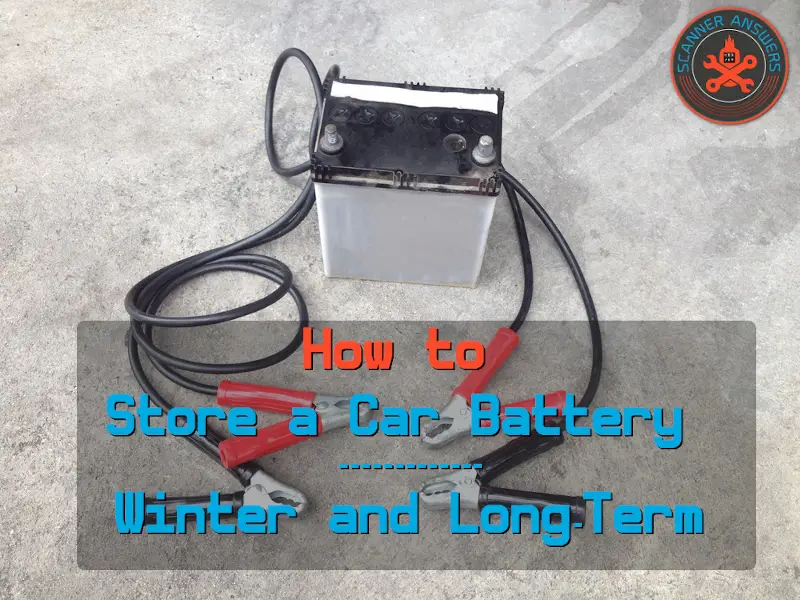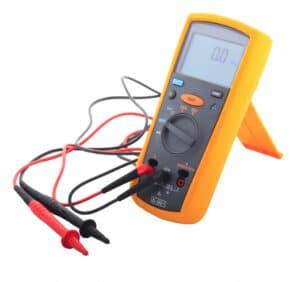If you need to learn how to store a car battery then you’re in the right place.
Maybe you’re taking a month-long trip to Iceland or just snow-birding over to Florida to escape the cold. Either way, you won’t be using your vehicle for a while and you want to make sure your car or truck starts up again when you return.
Storing your vehicle battery is not too difficult, but there’s a few things to keep in mind. Here’s some simple tips to keep your battery in good shape in long term storage:

You need to maintain your batteries
Contrary to popular belief, car batteries are not bulletproof. Even the best and most expensive AGM and gel cell batteries will succumb to prolonged storage, particularly during the winter. And when a car battery is idle, it tends to discharge naturally. If you have a sports car, convertible, or vintage car that you’re planning to keep under wraps, it’s best to pay attention to the car battery.
For starters, car batteries are expensive.
A typical wet cell/flooded battery starts at $45 to $50 and all the way to $120. Premium car batteries start at $90 to $200. And if you have two or three cars in storage, the costs add up to huge money in the end. You see, car batteries may be labeled as ‘maintenance-free’, but it only holds true if the vehicle (and battery) is driven periodically.
All batteries lose power if stored long enough. Yup, even those Optima Redtop’s. Surviving many months of zero chemical reactions is tough for a car battery. This holds true regardless of the weather. During the cold winter months, frozen electrolytes in a discharged battery can crack the plates and the casing itself. But if you store your car battery properly, you won’t need to think about discharging problems and/or battery damage.
How to properly store car batteries for long term storage
In truth, the steps in storing a car battery for Long-Term are similar to the Winter-storage steps. But in this section, we’ll try to be more specific.
Long Term Car Battery Storage Steps
Ideally, the car battery should be disconnected and removed from under the hood. It should be stored in a cool and dry place. The optimal temperature for storing a car battery is a tick above or below 59-degrees F (15-degrees C). In most cases, finding a room with an ideal storage temperature will spell the difference between success and failure.
It’s best to avoid a room that’s either too hot or too cold.

If the temperature gets high enough, sulfation and corrosion will also work double-time, inevitably destroying the battery. Sulfation, in particular, occurs when a car battery is constantly deprived of a full charge. It involves the formation of crystalline deposits on the negative plates of the battery. This actively reduces a battery’s capacity to store and release energy.
But for prolonged storage of three months or more, you’ll ideally want to use a battery tender. Remember, there’s a difference between a full-blown battery charger and battery tender (also referred to as a maintenance charger). Without it, you run the risk of permanently discharging the battery.

1. Check the levels
If you have a typical wet lead-acid battery, check the electrolyte levels and refill as needed before storage. You can check the Voltage output and charge levels with a multimeter tool. Try to make sure the battery is as full as possible before moving it to storage.
Make to read the battery charger gauge until it shows a charge level of 80+%, or else you may have a bad battery or bad alternator.
2. Place in cool dry area (off the concrete floor)

Place the battery in a cool and dry storage area, preferably in your garage and away from the living areas in your home. If you’re storing it in the garage, put a wooden pallet or a couple 2×4’s under the battery. Concrete gets cold in the winter, and cold drains batteries fast! The wooden bedding will keep your car battery a few degrees warmer than if it were in direct contact with the concrete.
3. Apply dielectric grease

Apply some dielectric grease on both the positive and negative posts. This helps prevent diode post corrosion during hot weather.
4. Attach battery tender

Connect the red positive clip and the black negative clip of the battery tender to each corresponding terminal. Plug the charger, turn it on, and follow the directions.
Storing a Car Battery for Winter

If batteries succumb to intense heat, the same holds true during the winter months. Did you know a car battery loses 60-percent of its operating strength at 0-degrees F? With that in mind, it’s better to keep the battery in a warmer part of the house. While this is tricky during harsh winter months, you don’t want to deal with a frozen battery, so better keep it nice and warm.
- Inspect and clean the battery terminals and apply dielectric grease if necessary.
- Place the battery on a work bench or wood platform (try to avoid direct concrete-contact)
- Connect the red positive and black negative clips of the battery tender to the corresponding terminals and turn the device ON
Is it safe to store a car battery on a concrete floor?
If you’re talking about a modern car battery, yes. It’s safe to store a battery in a room with concrete flooring. As previously mentioned, the room temperature is important above all else. While it’s true older batteries with archaic wooden casings should NEVER be placed directly over damp surfaces (particularly on concrete), this old myth doesn’t hold true for modern car batteries.
Concrete conducts cold air more than warm air, so the surface temperature of the concrete floor will be a few degrees lower than a bench or wood surface. This colder surface means your car battery will drain faster on the concrete floor. Other than that, it’s harmless to leave modern batteries on concrete.
You see, today’s car batteries are equipped with tough polypropylene casings. Also, the seals in a battery’s post and vent systems are more resistant to migration and/or seepage.

How can I be sure the battery tender is working?
For this, you’ll need a multimeter. Unplug the charger/tender and set the multimeter to voltage. If the battery is at 14.4 volts, it means the charger is working. Most battery tenders are designed to charge a 12-volt battery up to 14.4 volts. After this, the charger turns off or applies a low, trickle current. Once the battery voltage sinks to 12.6 volts, the tender should resume charging.
However, not all tenders/chargers are the same. Your best recourse is to read and follow the instructions of the device.
Will my car battery lose charge in storage?
Assuming you don’t have a charger or tender, yes.
But it’s not about how long the battery is stored, but where it’s stored. Remember, keep it cool and dry. Also, check the voltage with a multimeter at least once every two months. If the voltage drops below 12.6 volts, the battery needs to be replenished via a charger or tender.
And if you ignore the warning signs, the battery will eventually discharge to the core and die permanently.
How to take the battery out of storage
It’s as simple as unplugging the battery tender and placing the battery in its rightful place: Under your car’s hood. Install and tighten the terminals, start the engine, and allow the engine to warm up.
Conclusion
It doesn’t matter if you have a cheap lead acid or premium gel cell car battery. When storing a car battery, always keep it cool and dry. Periodically checking the voltage and using a battery tender is cheap insurance against a dead battery.